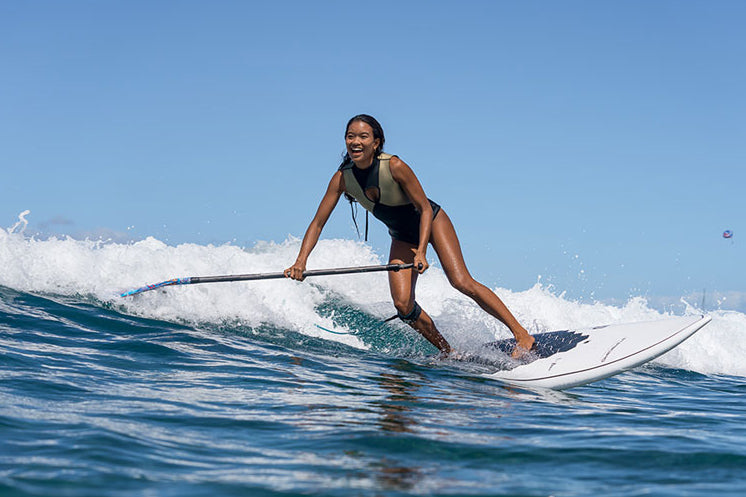How To Choose a Paddle Board Paddle
Paddle board shoppers often spend a lot of time and effort researching what board to buy, but leave paddle selection as an afterthought. Spending a little more time on choosing a paddle is well worth it for a simple reason: Your paddle will affect your performance and your enjoyment of stand up paddle boarding as much as the board you are riding on.
The most frequently asked question we get is about paddle selection is What Size Paddle Should I Buy? The answer is simple: Most SUP paddles are adjustable for a wide range of rider heights, so you don’t generally need to worry about paddle length unless you are under 5 feet or well over 6 tall. Blade sizes for adult paddlers should ideally range from 85 to 95 square inches. A smaller blade leads to a faster paddling cadence, while a larger blade allows for slower but more powerful strokes.
So once basic sizing considerations are addressed, what’s the key to choosing a SUP paddle?
First, determine which of the basic type of paddle you can afford.
- Aluminum shaft paddles are cheap but heavy.
- Fiberglass paddles are lighter and more expensive than aluminum.
- Carbon / Fiberglass blend paddles can vary in quality and performance substantially.
- Full / 100% Carbon paddles are the most expensive, but they are extremely lightweight and are the gold standard by most criteria.
Once you have settled on the materials that fit your price range, you need to select a shaft configuration. The basic choices are:
- Fixed length (1 piece)
- Adjustable length (2 pieces)
- Adjustable length breakdown paddle (3 pieces) which can be taken apart to fit inthe bag with an inflatable paddle board.
Finally, you’ll want to consider some additional details of the paddle, including the blade size, adjusting system, and handle design.
![]()
SUP Paddle Material Choices
The materials used to construct a paddle are the main determinant of quality and price. The most common materials used in paddles are 100% carbon, carbon blend, aluminum, and fiberglass.
100% Carbon (Full Carbon)
We’ll start our discussion of paddle materials with 100% carbon, which may seem like a backward approach since it is the most expensive. We do this because of a simple fact: Anybody who spends any time stand up paddleboarding with other people eventually gets a carbon paddle in their hands, and once that happens, there is no turning back to a heavier paddle. The satisfaction of having an ultra-light paddle that responds to every nuance of your stroke is so compelling that we encourage paddlers to start off on the right foot and make the investment in a full carbon paddle upfront if possible.
Aside from the cost, there is really only one technical downside to carbon paddles: Carbon, while stronger than other paddle materials, can chip or crack upon impact with a hard object. In most environments, this will not be a problem, but if you use a carbon paddle on a river with exposed rocks, you’ll need to avoid hitting them with the blade. Another solution is to protect the blade with rubber edging.
When shopping for a carbon paddle, beware of the very casual use of the word “carbon” as a marketing descriptor to increase the perceived value of a paddle made primarily of less expensive materials. Carbon fibers can be used to add some strength to a shaft made of 90% fiberglass, but in our view, it does not justify calling it a carbon shaft, since it is only a slight upgrade to the original fiberglass. There are also paddles that have a nylon blade on a shaft that has a certain percentage of carbon. This can be a valid upgrade from a fiberglass shaft if the carbon content is at least 50%, but there is no sense in putting a nylon blade on a 100% carbon shaft, as the blade weight negates the weight savings in the shaft and results in a blade-heavy paddle.
Carbon Blend
Paddles can be made with a blend of carbon and fiberglass in almost any proportion. A paddle with 50% carbon will essentially split the difference in weight and rigidity between a full carbon paddle and a fiberglass one. The price will be a bit lower than a full carbon paddle, so it’s an option to consider if you want weight and performance similar to full carbon but your budget is limited.
Fiberglass
Fiberglass is a commonly used shaft material for mid-range paddles. It costs a bit more than aluminum but is considerably lighter. A fiberglass shaft is most typically mated with a nylon blade. Blades can also be made of fiberglass, but then the cost starts to creep up to carbon levels.
Aluminum
Aluminum is the shaft material commonly used in starter paddles that come in the box with some lower-priced inflatable paddle boards. It will allow you to paddle your new board, but will also have you looking forward to getting a better paddle as soon as you can afford one.
![]()
Paddle Shaft Configurations
Paddles can be made with a fixed-length shaft, a telescoping 2-piece shaft that allows for length adjustment, or a 3-piece shaft that breaks down for travel and storage. Regardless of the shaft configuration you choose, you will need to know the proper paddle length for your height. The rule of thumb for setting paddle length is that it should be approximately 8 inches more than your height. From there, it can be adjusted up or down by 1-2 inches according to your preference. In general, you’ll want a longer paddle for long-distance touring or racing and a shorter paddle for surfing or whitewater.
Fixed Length (1 piece) Paddle
The simplest of all paddle setups is the one-piece fixed-length paddle. Since proper paddle length is a function of the user’s height, a one-piece paddle will typically need to be cut to the desired length and have the handles glued on. For this reason, they are more commonly used by serious paddles and are often made of carbon. A one-piece carbon paddle is the lightest of all options, but it is not practical for air travel.
2 Piece Adjustable Paddle
A 2-piece adjustable paddle has the handle attached to a telescoping shaft section that fits inside the main shaft and can be locked down at various positions to alter the length of the paddle. It is a good option if you won’t be traveling by air, want a paddle that can be adapted to various riders, or don’t want to get into having a paddle cut and glued to your specific height. Adjustable paddles have a clamp built into the shaft that secures the telescoping handle section, or a mechanism built into the handle that secures the telescoping section to the main shaft from the inside.
3 Piece Adjustable Paddle
A 3-piece adjustable paddle has the same design as a 2-piece adjustable paddle, except that it has an extra joint above the blade that lets the main shaft section be taken apart and reassembled. It is the most versatile of the paddle configurations, as it can be packed in the bag with an inflatable sup and taken on airplanes or anywhere you can travel with a rolled-up board.
![]()
Blade Size and Shape
Blade sizes are measured in square inches. The middle range of blade sizes is somewhere between 85 and 95 square inches. A larger blade provides more power with each stroke, which leads to a slower paddling cadence. A smaller blade allows more casual strokes but can also be used in racing with a faster paddling cadence.
Paddle blades used to be on the larger end of the scale, with some models measuring 105 or more square inches, but the trend has shifted strongly to smaller blades for higher cadence paddling. Within the middle range of blade sizes, matching a blade size to a user is not as critical as one might think. In most cases, the user’s paddling style adjusts to work with the blade size, so our advice is to just stay away from extremes of large or small blades and stay in the 85-95 square inch range.
The blade pulls through the water during the stroke and how much power and grab is determined by its shape and general rigidity (working in combination with the shaft and stroke technique). Upgrading to a carbon blade will mean that as well as generally being lighter and stronger, the power will be generated throughout the center of the blade as it enters the water and not lost through spill/flexibility. The rigid nature of a carbon blade will hold onto the water propelling you and your board further and faster with less effort. This is critically important for precision strokes if you want to make prys and draws you can really feel the blade's angle and position with a harder blade, overall giving you much more control.
![]()
Length Adjuster Options
There are two main types of adjustable length paddles. One type has a clamp attached to the shaft with a lever that opens and closes to control the movement of the telescoping handle section of the shaft. The other type has a lever built into the handle and a device on the end of the handle shaft section that grips the lower shaft from the inside. Both designs get the job done, but we prefer the clamp on the outside of the shaft to keep the handle as smooth and comfortable as possible, without having a lever in the critical area where the palm of your hand rests. Also, handles with the built-in lever are invariably made of injection-molded plastic, removing the option of selecting a more comfortable handle material.
![]()
Handle Options
Handles can be made of plastic, fiberglass, or carbon. Fiberglass or carbon will be stronger and more comfortable on your hands than plastic. Some paddle handles are wrapped with a foam grip material, but we don’t recommend this because it can lead to blisters and can degrade over time. Plastic handles tend to be less comfortable and aesthetically pleasing than carbon or fiberglass, but some length adjusting systems require a lever in the handle and must be made of plastic. The size and grip shape of handles also vary. The most common grip types are the T-grip and the rounded palm grip. Both grip types work well for most paddlers. The T-grip is considered to have advantages for control, whereas many paddlers find the more rounded palm grip to be more comfortable.
![]()
Finding Your Perfect Paddle Board Paddle
So how do you go about finding the best SUP paddle for your needs? The key is to start with the material choice and shaft configuration that meets your planned uses and budget, choose a blade size for either faster cadence or stronger strokes, and compare the details of handles and adjusting systems. The result will be a paddle that will be an asset for you every time you go out on the water.
We've made it easy for you and created a paddle selector that allows you to answer 5 questions and find YOUR paddle based on the products available on our site.
Try the quiz now! : https://montrealsup.com/tools/perfect-product-finder/selecteur-de-pagaie-copy#/

